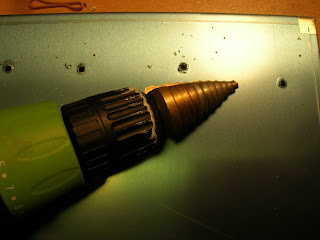 This is a Traynor bass amp that a client brought to me with some minor complaints and some mods he wanted done. This was the last YBA2b version and was produced in 1977-78 with two 12ax7a's for preamp and PI and two el84/6bq5's for output. The combo houses a 15"
This is a Traynor bass amp that a client brought to me with some minor complaints and some mods he wanted done. This was the last YBA2b version and was produced in 1977-78 with two 12ax7a's for preamp and PI and two el84/6bq5's for output. The combo houses a 15"speaker. Here's the link related to the mods he was looking for - pretty standard bass amp to guitar amp kind of thing... different coupling caps and some voice tweaking.
http://www.guitarscanada.com/amp-tech-section/7672-traynor-yba-2b-question-wild-wild-bill-3.html
His other complaint was it was sounding very thin, that it was all ear-piercing high-end with weak low-end... not good for a bass or guitar amp. My first guess was a cap job was necessary - any 30 year old amp with original caps needs them replaced. This will typically solve the loss of bass.
So it seemed like a pretty straight-forward recap/mod/re-voice but this amp by it's very nature presented some challenges and so was a lot more interesting to work on.
The amp was spec'd to work on 115VAC. Today we have 120VAC and in reality (at least at my home) I see 123VAC from the wall. This amp is already being run by design at the upper end of what a couple of EL84's can handle as far as B+ on plate and screen are concerned. With the additional supply voltage this baby was running voltages that I thought were excessive. Tube life was probably pretty short for these poor old 84's but would need to be changed every few months if run the way it was.
I'll post soon and get into the particular mods that were done in re-voicing the amp and also how the elevated B+ voltage was handled. Until then...


















